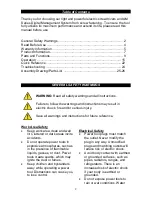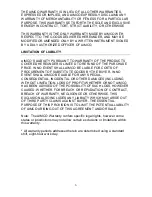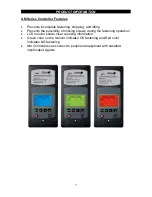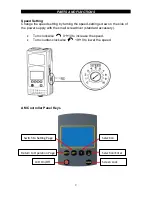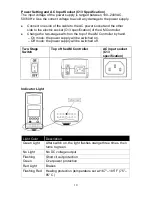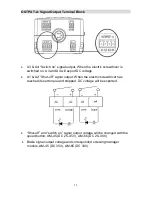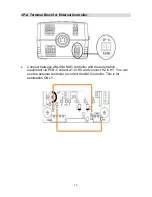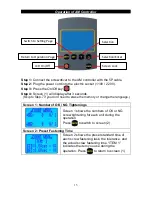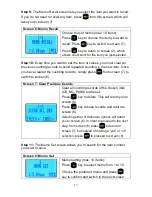
3
entering a power tool or its
adaptor will increase the risk of
electric shock.
•
Do not abuse the cord. Never
use the cord for carrying,
pulling, or unplugging the power
tool. Keep cord away from heat,
oil, sharp edges, or moving
parts. Damaged or entangled
cords increase the risk of
electric shock.
•
When operating a power tool
outdoors, use an extension cord
suitable for outdoor use. This
reduces the risk of electric
shock.
•
If operating a power tool in a
damp location is unavoidable,
use a residual current device
(RCD) protected supply for its
adaptor. Use of an RCD
reduces the risk of electric
shock.
Personal Safety
•
Stay alert, watch what you are
doing, and use common sense
when operating a power tool.
Do not use a power tool while
you are tired or under the
influence of drugs, alcohol, or
medication. A moment of
inattention while operating
power tools may result in
serious personal injury.
•
Prevent unintentional starting.
Ensure the switch is in the off
position before connecting to a
power source or battery pack,
picking up, or carrying the tool.
•
Carrying power tools with your
finger on the switch, or
energizing power tools that
have the switch on invites
accidents.
•
Remove any adjusting key or
wrench before turning the
power tool on. A wrench or a
key left attached to a rotating
part of the power tool may
result in personal injury.
•
Do not overreach. Keep proper
footing and balance at all times.
This enables better control of
the power tool in unexpected
situations.
•
Dress properly. Do not wear
loose clothing or jewelry. Keep
your hair, clothing, and gloves
away from moving parts. Loose
clothes, jewelry, or long hair
can be caught in moving parts.
Summary of Contents for AM-45
Page 25: ...25 Assembly Drawing ...
Page 27: ...27 ...


